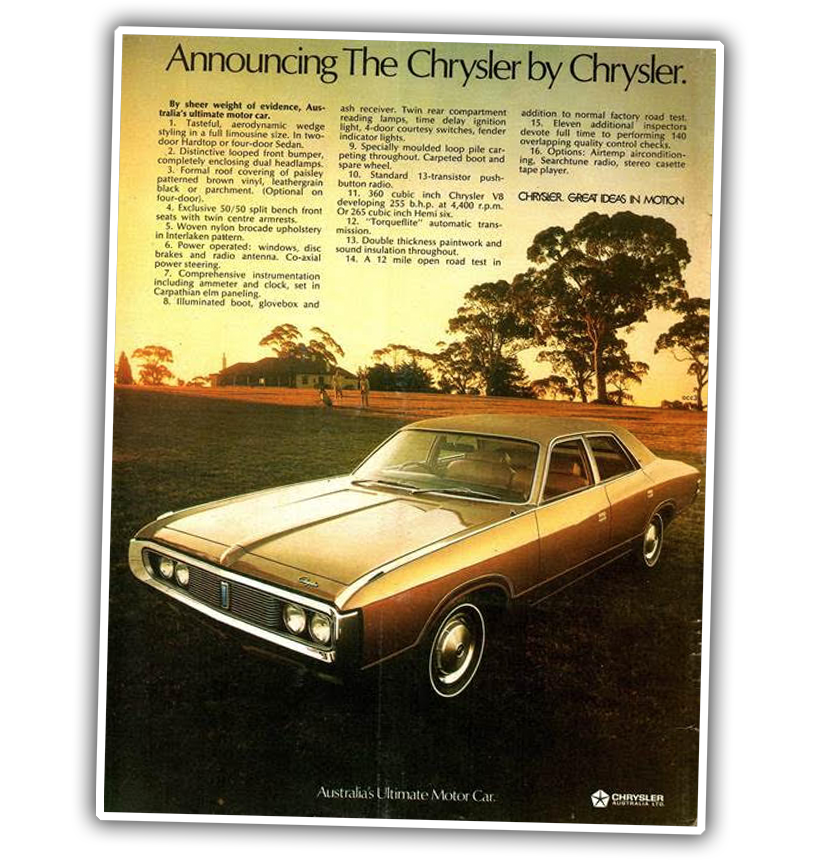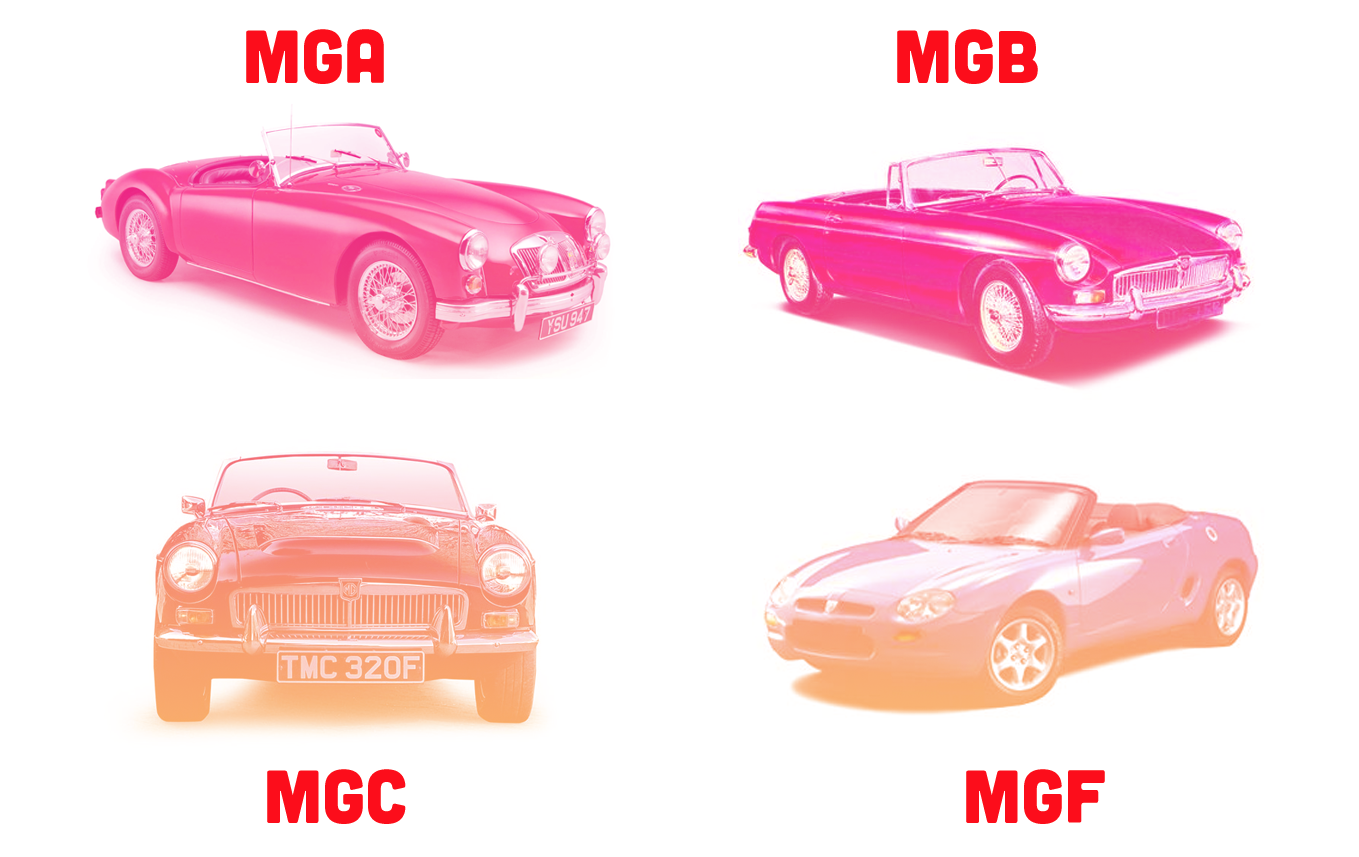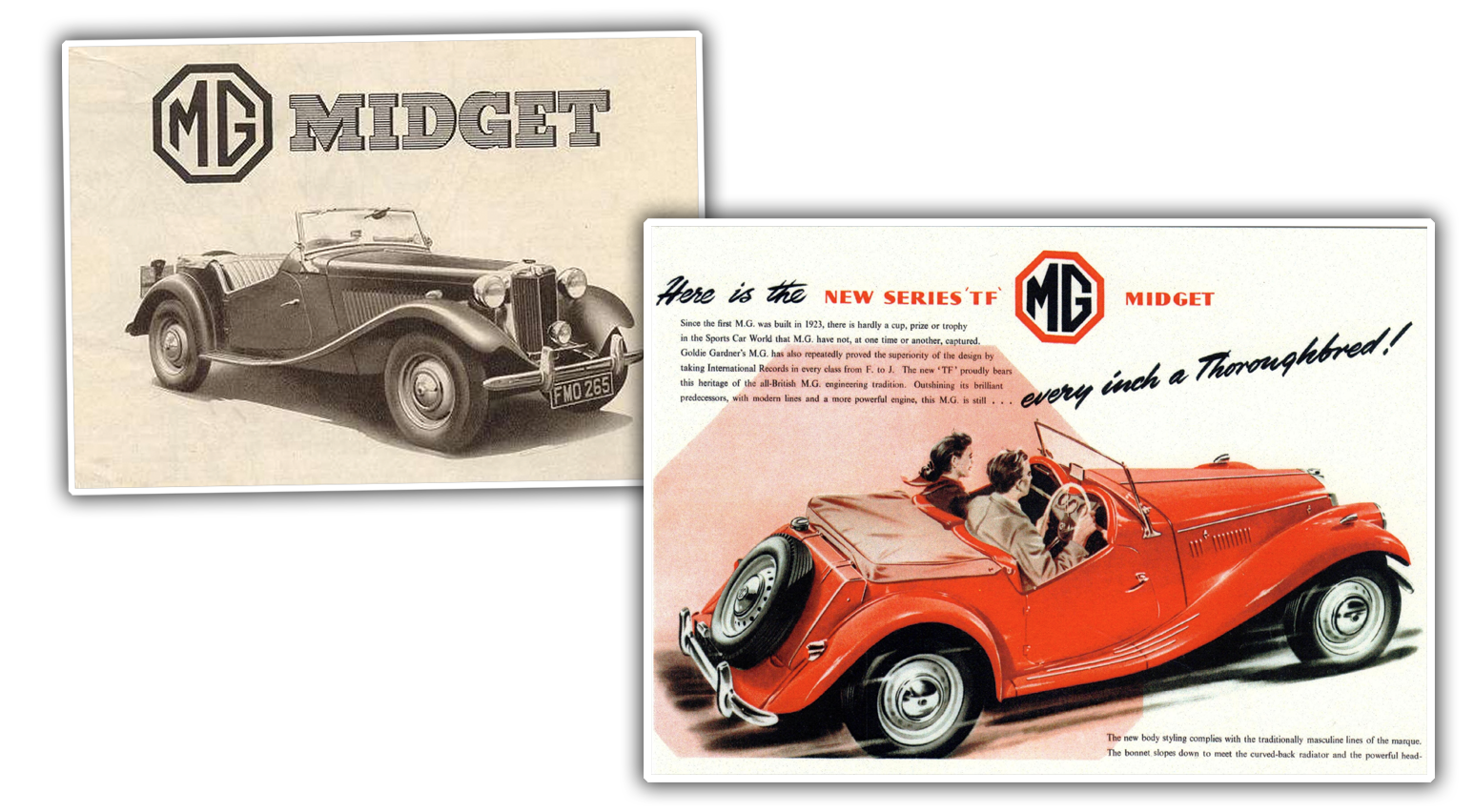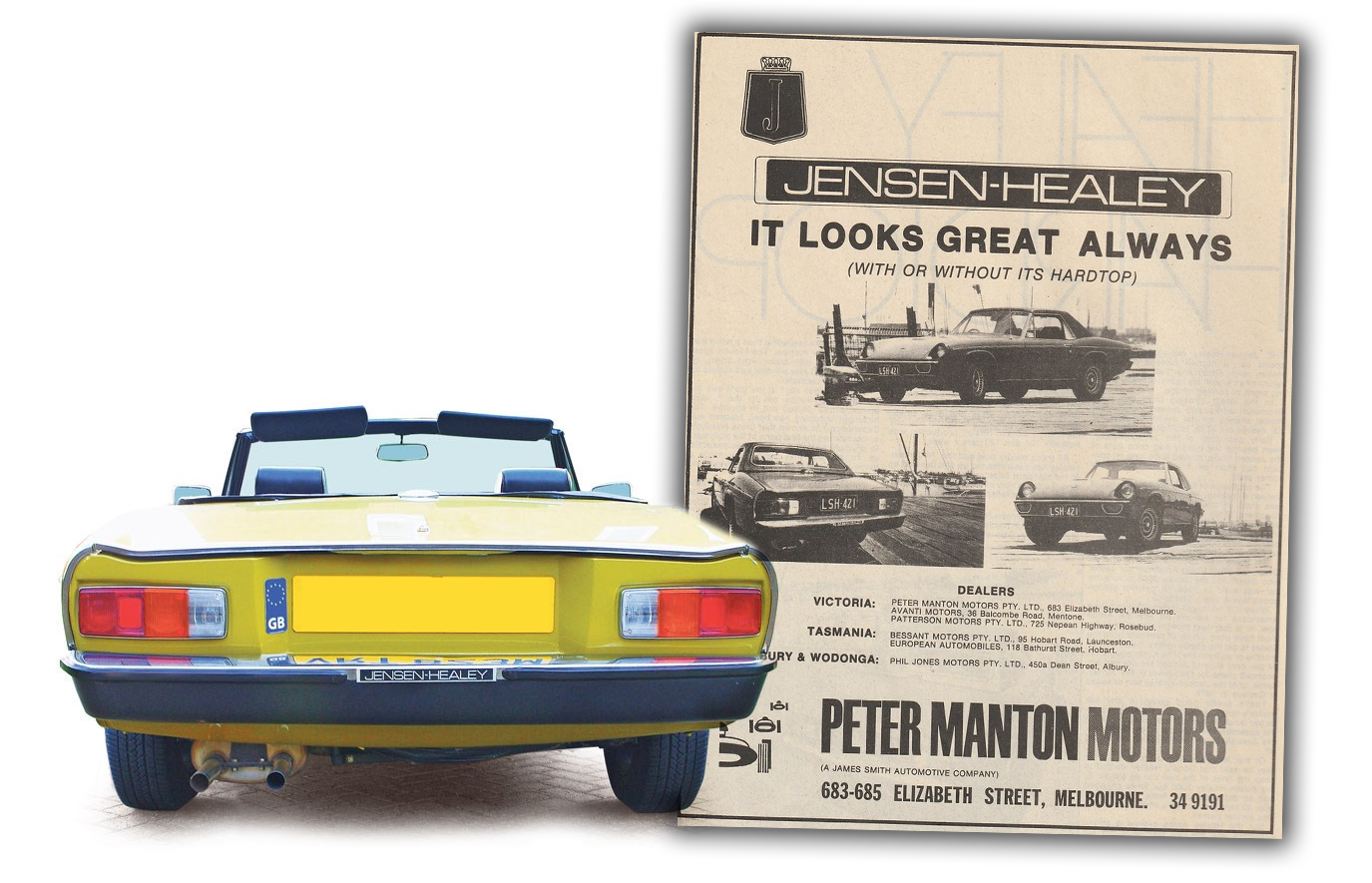The way cars get named has its own subtle but powerful set of rules — rules that, like all good rules, are cruel and unforgiving and arbitrary. Mark Aronoff’s 1981 MIT Press paper Automobile Semantics defines the fundamentals, essentially breaking down rules that we’re all inherently aware of, which is why what I want to discuss with you now is so interesting and important. The MGB is the car I want to talk about, and, if you haven’t thought about it before, the name of that car is about as weird as three letters can be. Let’s look into why.
First, let’s use Aronoff’s paper to help us define how car names usually work, semantically:
The name specifies one or more of the following categories: year, make, line, model, and body type. When designating a car fully, all of these categories are specified in the order given:
(4) 1972 Chevrolet Chevelle Malibu sedan year make line model body type
Less specific designations can be made by using fewer than all five categories, again in the fixed order:
(5) Chevrolet sedan
Chevrolet Malibu
1972 Chevelle
As far as I can tell, all categories are optional, and the only restriction is that the year cannot stand alone: (6) Q: What kind of car do you drive? A: A Chevrolet; a Chevelle; a Malibu; a sedan; ??a 1972
This restriction is pragmatic; it can be traced to the fact that simply giving the model year of the car is not informative enough. We can therefore give the following phrase structure rule for American car names:
(7) car name -* (year) (make) (line) (model) (body type)
So, we all instinctively know this: It would sound weird if I told you that I still had the Beetle 1973 Volkswagen I’ve had since I was 18, for example, even though all of those words are the ones you expect. The order is important, as are the essential categories, and these are never deviated from.
Well, almost never. Sometimes, car names can eliminate the model category, but this really only works if the car company only has one self-named model. Think of the Gordon-Keeble (a fantastic British muscle car of which only 90 were made), or the LaForza, the strangely plain-looking Italian SUV sold in low numbers in the early 1990s (though that car outside of the US was called the Rayton-Fissore Magnum).
Also note that I called it the LaForza, because cars get an article when you’re talking about a specific model but no article when talking about the company. LaForza built and sold the LaForza. See?
Another example of this is how the Volkswagen Beetle (it gets the article because I’m talking about the specific model, see) was just referred to as “the Volkswagen” in many early reviews in America, especially before VW sold anything else. Here’s an example from a 1953 Mechanix Illustrated:

Sure, VW had the Bus since 1950, but it was still pretty unknown in America, so everyone just called it “the Volkswagen,” combining model name and manufacturer.

Carmakers have tried this self-naming gambit a few times since; recently, we have the Ferarri LaFerrari, which is pretty damn close to a double name, but not quite, and not quite as close as Chrysler of Australia, who sold a car they called the Chrysler by Chrysler:

Interestingly, this naming weirdness can’t function on its own, as it needs the preposition “by” to work at all. Chrysler couldn’t bring themselves call it the Chrysler Chrysler, because there are still some rules, dammit.
I don’t get the reasoning why a car maker would pick the Same Name by Same Name construction. Maybe they long for the simplicity of one of those one-car lineups? I don’t know.
Anyway, I bring up all of this as just to help get us all immersed in the framework of automotive nomenclature so you can appreciate the well-known example that breaks the rules: the MGB.
Well, really, the whole line of the letter-based MG names: MGA, MGB, MGC, and MGF. These are strange car names because they combine the company and model into one name, and even if some places may show these as an MG MGB, for example, that’s only so they can fit the name in some database or whatever, because nobody ever calls these cars an MG MGB or MG MGA or whatever. It doesn’t happen.
To make this more baffling, other letter-named MGs don’t fall in this same category, like the MG TD or TF. See? I called it a TF — no MG — because that’s somehow okay, maybe because these cars also had, at one point, the additional model name of Midget:

Also, they called it the “Series TF,” for example. MG did a lot of strange things with names.
Still, I’d never call an MGA an A, for example, unless it was in some really, really specific context where MGBs and MGAs and whatever had been discussed immediately before, or something like that. Otherwise, no MGA person says they drive an “A.”
A further example: Look at the MGB/GT, the hatchback coupé variant of the MGB roadster. The company and model are still combined in MGB, but then there’s a slash and the “GT” part. Again, we still have company name and model blended in an unholy fashion.

The only other car that comes close to flaunting automotive naming conventions like this might be the Jensen-Healey, but even then it’s not quite the same. Yes, Jensen-Healey is a model name that is sort of combined with its manufacturer name, as Jensen is the company and Jensen-Healey was the car, but the car was a special partnership between Jensen and Donald Healey (not Austin, sorry)— this is unlike MG, who was just doing that crazy shit on its own.
I’m not exactly sure what I’m hoping you’ll take away from this other than a bit of strange admiration for MG, the only carmaker that really managed to pull off a direct subversion of automotive naming conventions and just, somehow, get away with it.
Good job, MG. Way to keep it weird.
(thanks to the Bishop!)




We have two examples of this in France :
-The DS brand, with cars like the “DS DS3” or “DS DS4”, where the cars have the DS logo on the rear plus “DS4” by example written in the lower right corner, but we always say “DS4” not “DS DS4”. And to add some complexity when DS was still part of Citroën there was not Citroën logo in the back, but the same DS logo as today with a little “3” “4” or “5” right next to it. I guess they changed the naming on the back of the cars to make sure that people say “the DS3” and not “the 3”
-The Alpine GTA. It was the successor of the A310, and they wanted to integrate it into the Renault range. So it was sold as “Renault Alpine V6 GT” or “Renault Alpine V6 Turbo” depending on the engine. But in the mind of people Alpine was still his own brand, plus Renault went back to putting Alpine’s logo instead of their, so people are a bit confused. We can not name them “the V6 GT” and “the V6 Turbo” because we want to include both versions under one name, and “the V6” would be too much imprecise (it could be an A310 or A610). So we use a Renault code “the GTA”, that was never used commercially except in UK were the “Alpine” name belonged to PSA, from Talbot/Sunbeam. The funny thing is that “GTA” meant “Grand Tourisme Alpine”, sot it would mean the car was called “Alpine Grand Tourisme Alpine”. Also, as it things were not complex enough, there already was a Renault GTA in the US (a more powerful Alliance).
All of those MGs are beautiful. One of each, please.
Why can’t modern cars look that classy, sporty and elegant?
As a past RBB owner (I never actually used those letters to describe it, it was just an MGB, B, or rubber bumper car), I feel compelled to defend it against the criticisms that are being leveled against it. Yes in stock form it was a bit of a mess, even a joke when compared to earlier cars. But don’t forget that these cars were simple to work on and parts were easily available (still are even). It was a simple matter to replace the lever style dampers with adjustable gas ones, and use different springs and the front sub-assembly and steering rack (also roll bar) from an earlier car to bring the ride height down to its proper level. Then just replace the points style fuel pump with an electronic one, get rid of all the crazy tubes and air pumps strangling the engine, and swap the Zenith carb and intake manifold for a couple of SUs with a manifold that was polished to remove all the sharp edges and ridges that were normally found inside. Finish the engine off with a slightly hotter cam, a recurved distributor, and light weight pistons giving higher compression and you would end up with well over 100hp, like maybe even 20hp more! Drill a bunch of holes in the brake disks and replace the pads and shoes with higher performance formulations and complete with some modern Pirellies and it will turn and stop too. Reconstruct much of the wiring harness with proper connectors, add Bosch headlamps using relays and wires of the proper guage, and no more Prince of Darkness. Replace the rear axle and front hubs for splined ones, build four pretty good wire wheels out of more than nine not good wire wheels, strip it of all trim and repair any rust there may be, find someone willing to respray it for cheap as long as all the prep was already done, replace any missing/damaged trim and then replace all the lighting, mirrors and trim that had been removed, and it will look pretty darn sweet. Also the front spoiler as used on the Limited Edition model. Source a highly desireable removable hard top, and in only three or four years of messy work out in the yard under a tarp you will have a car that is better than a stock model of any year; and easily as good as anything else that had been designed in the early fifties. People only put these cars down because they don’t know how to do proper maintainance.
Know why the one after the MGC wasn’t the MGD? Because MG did not reach an agreement with VM Motori for a diesel engine. Thus we lost the MGDVM. OMG what a pity…
Just one more thought: Jeep its own naming weirdness in various forms:
e.g.,
1947-49 Jeepster (that’s it for the name) was weird 4wd car like thing based (CJ’s) on military jeep for the masses.
It was made by Willys-Overland but later owned by Jeep, AMC, Chrysler, Daimler and on and on.
https://en.wikipedia.org/wiki/Willys-Overland_Jeepster
Lead pict, same as my 67 B. Dad bought is 68, daily drove it until 81, gave it to me. I rebuilt the engine/trans, put in electronic ignition and re-upholstered it. Drunk driver rear ended me and totaled it in 83. Been looking for a low cost replacement the past few years. The prices on BaT are outrageous. BTW they have a JDM MG RV8 up right now. This is a really rare MG too, too bad about the mods.
I suppose, technically, you could have an MG MGB/GT V8, which seems like a bit of an alphabet soup
There is a thing I NEED you to look into. Why do automotive marketing types sometimes refer to a model name without ‘the’ in front of it? They will say some dumb shit like “We’re really excited about Mustang”. It should be ‘the Mustang’.
Never believe corporate types, or the management where you work, when they say they are “excited” about something. Are McDonald’s workers really excited about the McRib being back for a limited time only? The “excited” terminology just means that something is really going to suck.
Don’t forget the Cadillac CT6! (“CT” stands for “Cadillac Touring”, so the full name is “Cadillac Cadillac Touring 6”)
“ The only other car that comes close to flaunting automotive naming conventions like this might be the Jensen-Healey…”
Not flaunt. It’s flout, man – FLOUT!!!
[flounces off]
I like my Mazda Mazdaspeed3, because it isn’t a Mazda Mazda3, but it makes it hard when searching for parts ????
I am pretty good at holding the rictus smile whenever someone mentions that their old boyfriend/weird uncle/classmate/whatever “used to have one of those MGB Midgets. Do they still make those? You never see them any more.”
LOL, that’s why I like the Austin Healey cousin, the Sprite. Then it’s all about the MK, unless you’re talking the MK I, then it’s a Bugeye or Frogeye, depending on the side of the pond you’re on.
Of course the Midget/Sprite cousins are sometimes lovingly known as Spridgets. Or maybe that’s unlovingly…
(Mainly I’m replying to see if my reply gets posted—I was never able to “get out of the grays” over on the founders of this site’s previous employer.)
I never understood that “grey” system. But I had abandoned that site years ago.
I’ll chime in with a personal annoyance that is near and dear to my heart.
The Nissan S-Chassis cars, though known by several wistful names in their home market and a few others (“Silvia”, “Gazelle”), have almost always used a very specific naming convention in North America and Europe, starting with the very first 200SX in 1976. Simply put, the name was based on the engine displacement, BMW-style. A 200SX used a 2.0L engine. In the case of that first S10-series 200SX, an L20B.
For the next generation, the S110-series, the 200SX moniker was kept, which was appropriate in 1980-81 when the car used the 2.0L Z20E engine. The system started to break down in 1982, when displacement was increased to 2.2L without a name change. Sort of understandable, since little else changed that year and you don’t just throw away a model name that’s got some recognition.
With the 1984 model year, the S12-series 200SX was introduced. The base model cars fit their name, using a 2.0L CA20E, but the turbo models used a 1.8L version of the same motor, and by rights should have been called 180SX (as their later descendants in Japan would be). By the same token, if Nissan stuck to their naming convention, the 1987-88 200SX SE V6 would have been named 300SX.
With the advent of the S13 in 1989, Nissan restored balance to the American sector of the S-chassis universe and dubbed the car 240SX in America, where a 2.4L engine was used. European versions were badged 200SX whether they used 1.8L or 2.0L powerplants, and the JDM 180SX used a name-appropriate 1.8L motor.
So Nissan continued the tradition of playing fast and loose with S-chassis naming conventions, then in 1995 they threw the entire idea of consistency into the dumpster and slapped a 200SX badge on the 2-door variant of the B14 Sentra in North America, most of which used 1.6L engines. Only the SE-R even had the correct displacement for its name, but still the wrong platform.
Agreed! Always liked when the number in the name signaled the engine, like a Mazda B4000 has a 4.0L and an Infiniti J30 has a 3.0L engine.
Now, almost none make any sense whatsoever. Infiniti and Lexus lost theirs, even Mazda’s overseas truck didn’t keep the faith.
Pontiac was pretty bad with its 1000s series names in the 80’s.
I was selling Pontiacs back then and I had a woman come in and wanted to drive a Pontiac GOOOLE (she pronounced it GOOOO LEEEEE). I nicely told her we had no such model, but she adamantly told me that she saw the label on the back of the car, and spelled it out for me.
I looked across the showroom, and sure enough, there was a Pontiac 6000LE. Pontiac’s techno font back then made it look like G000LE.
I wonder if Sergey Brin had a special edition 6006 LE?
I’ve heard of kids calling them that.
I always thought they should have named it Catalina, so each version of that car would start with a C: Catalina, Century, Cutlass Ciera and Celebrity. The 6000 was the only one that broke it up.
The 6000 was probably my favorite behind the Cutlass Ciera. Never liked the Century or Celeb.